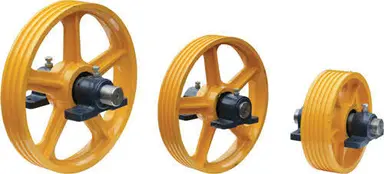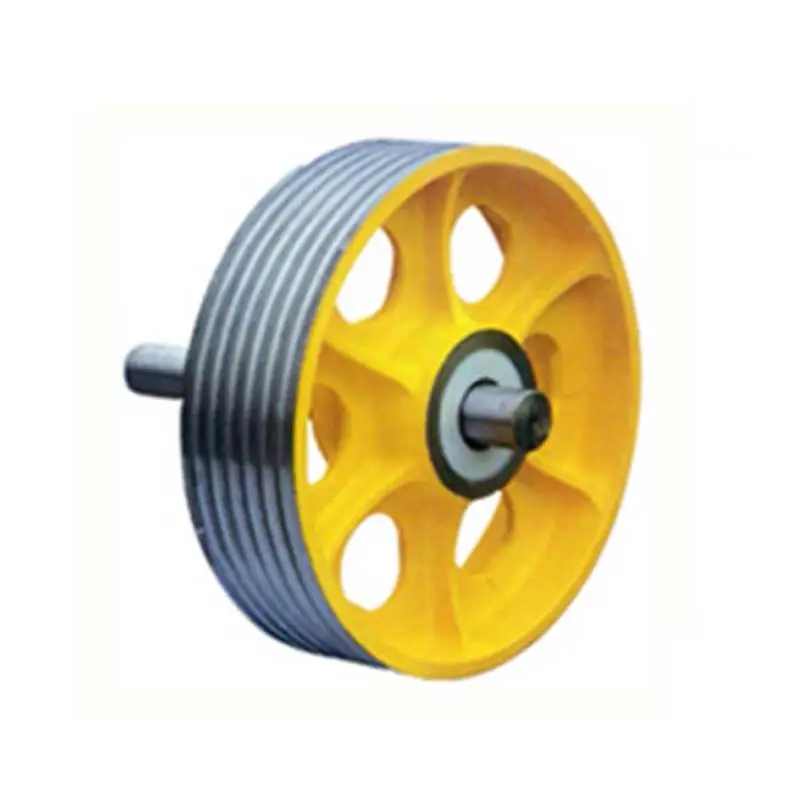Product Description
Best selling lifting stainless steel chain pulley hoist block
The Twin Swivel Block can fit multiple rope sizes ranging from 25mm to 50mm.This block body is made from grade 304 or 316
stainless steel and the removable sheave is made from grade 304 or 316 stainless steel for corrosion resistance and durability.
It is ideal for marine and industrial rigging applications.
About us
Haito stainless Co., Ltd. was founded in 1998.Specializing in the production of stainless
shackle,turnbuckle,terminal,screw and other metal products.Products of high quality,
fashionable, windely used in a variety of architecture, not only has the broad masses of the
domestic sales market,but also exported to Europe and the United States. Over the past few
years of production and management and exploration,Founder set up its own quality
management system. Passed the ISO9001:2008 quality system certification Founder always
implement the concept of customer value creation for customers tailored products to meet
the needs of different customers, and continuously provide customers with solutions and
technical problems. Further exploration and innovation, and excellence. Warmly welcome
you and opening up the boundaries of communication. We synchronize with your ideal
partner! we can produce many kinds of body for shackles, we export shackles to all over
the world. we can produce all sizes of shackles and can produce special shackles in
accordance with the customers’ requirements.
| We haito Stainless specializes in ss304 and ss316(L) Rigging, Pipe Fitting. |
| Contact me for futher detailed including the price. Waiting for your reply |
| The below is our more information: |
| *Experience: We are factory with 18 years export experience |
| *Process: Investment (Lost Wax) Casting & Forging, Machining, Mold Design |
| *Finishing: Mirror Polish |
| *Quality Control: Spectrometer Analysis & Load Testing Machines |
| *Management: ERP System |
| *Certificate: ISO 9001:2008 |
| *Service: Good after-sale team |
/* March 10, 2571 17:59:20 */!function(){function s(e,r){var a,o={};try{e&&e.split(“,”).forEach(function(e,t){e&&(a=e.match(/(.*?):(.*)$/))&&1
| Application: | Boat, Yacht |
|---|---|
| Standard: | ASTM, GB, DIN, ANSI, JIS, ISO |
| Customized: | Non-Customized |
| Surface Treatment: | Polished |
| Material: | Stainless Steel 304/316 |
| Type: | Double Block |
| Samples: |
US$ 0.12/Piece
1 Piece(Min.Order) | |
|---|
| Customization: |
Available
| Customized Request |
|---|
How does the quality and precision of lifting pulleys impact the accuracy of lifting operations?
The quality and precision of lifting pulleys have a direct impact on the accuracy of lifting operations. The design, construction, and performance of pulleys influence the control, stability, and reliability of the lifting process. Here’s a detailed explanation of how the quality and precision of lifting pulleys impact lifting operations:
1. Load Control: High-quality lifting pulleys are designed to provide precise and smooth load control. They enable operators to accurately adjust the speed, direction, and position of the load during lifting operations. Pulleys with precise load control capabilities ensure that the load is lifted, lowered, or moved with accuracy and minimal deviation, resulting in precise positioning and placement of the load.
2. Stability and Balance: Precision-engineered lifting pulleys contribute to the stability and balance of the lifting system. They are designed to minimize vibrations, wobbling, or oscillations during the lifting process. This stability ensures that the load remains balanced and steady, reducing the risk of accidents, load shift, or damage to the lifting equipment. The quality of pulleys directly affects the system’s ability to maintain stability and balance throughout the lifting operation.
3. Efficiency and Smooth Operation: High-quality lifting pulleys are engineered to minimize friction and resistance, allowing for efficient and smooth operation. They are often equipped with low-friction mechanisms, such as ball bearings, to reduce energy loss and enable smooth rotation. Pulleys that operate smoothly require less force to lift the load, leading to improved energy efficiency and precise control over the lifting operation.
4. Reduced Jerks and Sudden Movements: Lifting pulleys that exhibit high precision and quality help prevent sudden jerks or uncontrolled movements during lifting. They ensure that the load is lifted or lowered smoothly without abrupt starts or stops. This reduces the risk of shock loads, equipment damage, and potential injury to workers. By minimizing jerks and sudden movements, precise pulleys contribute to the overall safety and accuracy of lifting operations.
5. Load Distribution: Quality lifting pulleys distribute the weight of the load evenly across the lifting system. They enable the load to be spread over multiple ropes or cables, ensuring a well-balanced distribution of forces. This even load distribution minimizes stress on individual components, enhances the system’s stability, and improves the accuracy of load handling and positioning.
6. Minimal Deflection and Stretching: High-quality lifting pulleys are designed to minimize deflection and stretching of the ropes or cables during lifting operations. They ensure that the cables remain aligned and experience minimal elongation or deformation. This reduces the risk of inaccurate load positioning caused by sagging or stretching of the lifting elements, ensuring precise and consistent lifting performance.
7. Reliability and Longevity: The quality of lifting pulleys directly impacts their reliability and longevity. Well-designed pulleys constructed with durable materials and precise manufacturing techniques are more likely to withstand heavy loads, frequent use, and harsh operating conditions. Reliable pulleys contribute to the accuracy of lifting operations by minimizing the chances of unexpected failures or malfunctions that can compromise the precision and safety of the lifting process.
8. Compatibility and
How do lifting pulleys enhance the safety and efficiency of lifting operations?
Lifting pulleys play a vital role in enhancing the safety and efficiency of lifting operations. They provide several advantages that contribute to safe and efficient lifting. Here’s how lifting pulleys enhance safety and efficiency:
1. Mechanical Advantage: Lifting pulleys provide a mechanical advantage by distributing the load’s weight across multiple sheaves or blocks. This distribution reduces the amount of force required to lift the load, making it easier for operators to handle heavy objects. The mechanical advantage offered by lifting pulleys minimizes the risk of strain or fatigue-related injuries to operators, promoting safe lifting practices.
2. Load Distribution: By utilizing lifting pulleys, the load’s weight is distributed among multiple strands of lifting cables or ropes. This distribution helps to evenly spread the load’s force, reducing the risk of overload on any single point or component. Load distribution minimizes the chances of cable or rope failure, ensuring safe lifting and preventing accidents due to sudden load shifts or unbalanced loads.
3. Controlled Movement: Lifting pulleys enable precise and controlled movement of the load. The pulleys allow operators to adjust the lifting speed, direction, and position of the load with ease. This control enhances safety by preventing sudden or jarring movements that can lead to accidents or damage to the lifted objects. It also allows for accurate placement or positioning of the load, improving operational efficiency.
4. Reduced Friction: Lifting pulleys are designed to reduce friction between the lifting cables or ropes and the pulley sheaves. This reduction in friction minimizes wear and tear on the lifting components, such as cables or ropes, extending their lifespan and reducing the risk of failure during lifting operations. It also reduces the effort required to lift the load, improving efficiency and operator comfort.
5. Versatility and Adaptability: Lifting pulleys offer versatility and adaptability in various lifting scenarios. They can be combined with other pulleys or lifting systems to create compound mechanical advantages, such as block and tackle systems. This flexibility allows operators to handle different load capacities and adapt to specific lifting requirements. Versatility and adaptability enhance the efficiency of lifting operations by providing suitable solutions for a wide range of lifting tasks.
6. Safe Working Load Indication: Many lifting pulleys come with clearly marked safe working load (SWL) indications. These markings provide crucial information about the maximum load capacity that the pulley can safely handle. By adhering to the SWL guidelines, operators can ensure that the pulleys are not overloaded, reducing the risk of accidents and equipment failures.
7. Training and Operator Awareness: Proper training and operator awareness regarding the use of lifting pulleys contribute to safe and efficient lifting operations. Operators should receive training on the correct techniques for operating and maintaining lifting pulleys. They should also be aware of safety protocols, load limits, and the importance of regular inspections and maintenance procedures. Well-trained operators can make informed decisions, identify potential hazards, and implement safe work practices, further enhancing the safety and efficiency of lifting operations.
By utilizing lifting pulleys, operators can benefit from improved safety and efficiency in lifting operations. The mechanical advantage, load distribution, controlled movement, reduced friction, versatility, and operator training all contribute to safer lifting practices, reduced risk of accidents, and increased operational efficiency.
What is a lifting pulley, and how is it used in various lifting applications?
A lifting pulley is a mechanical device used to change the direction of a lifting force and facilitate the lifting or lowering of heavy objects. It consists of a grooved wheel or sheave that rotates on an axle and is typically mounted on a frame or housing. Here’s an explanation of how lifting pulleys are used in various lifting applications:
1. Block and Tackle Systems: Lifting pulleys are commonly used in block and tackle systems, which utilize multiple pulleys to create a mechanical advantage. By arranging the pulleys in a specific configuration, such as a fixed pulley and a movable pulley, block and tackle systems allow users to lift heavy loads with less effort. Lifting pulleys in block and tackle systems distribute the load across multiple ropes, reducing the force required to lift the load.
2. Crane and Hoist Systems: Lifting pulleys are integral components of cranes and hoists used in construction, manufacturing, and other industries. In these systems, the pulleys are part of the lifting mechanism and are responsible for raising and lowering heavy loads. The pulleys in crane and hoist systems provide the necessary mechanical advantage to lift heavy objects safely and efficiently.
3. Elevator Systems: Elevators rely on lifting pulleys to move the elevator car up and down. The pulleys, along with the elevator cables or ropes, form the traction system that lifts and lowers the car. The pulleys in elevator systems ensure smooth and controlled movement while distributing the load evenly across the cables, allowing for safe transportation of passengers or goods.
4. Rigging and Rigging Gear: Lifting pulleys are often used in rigging applications, such as in the construction or entertainment industry. They are employed to redirect the lifting force, change the direction of the load, or create lifting configurations suitable for specific tasks. Lifting pulleys used in rigging applications are designed to withstand heavy loads and provide reliable lifting capabilities.
5. Material Handling Equipment: Lifting pulleys are utilized in various material handling equipment, including winches, come-alongs, and manual chain hoists. These devices incorporate pulleys to facilitate the lifting and transportation of heavy objects. Lifting pulleys in material handling equipment enable operators to apply force in the desired direction, making it easier to handle and move heavy loads.
6. Sailing and Boating: Lifting pulleys, also known as blocks, are extensively used in sailing and boating applications. They are employed to control and adjust the tension in ropes and lines, such as halyards and sheets. Lifting pulleys in sailing and boating enhance the efficiency of sail handling, allowing sailors to hoist, lower, and trim sails with ease.
Lifting pulleys are versatile devices that find application in a wide range of lifting scenarios. Whether in block and tackle systems, crane and hoist systems, elevator systems, rigging, material handling equipment, or sailing and boating, lifting pulleys play a crucial role in facilitating safe and efficient lifting operations.
editor by CX
2024-01-03




